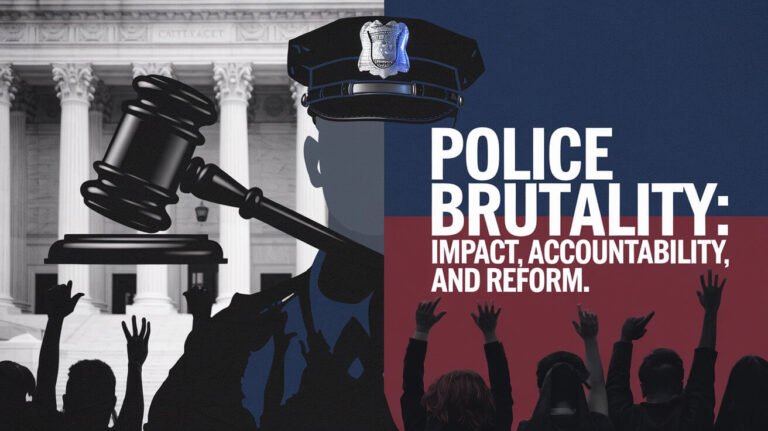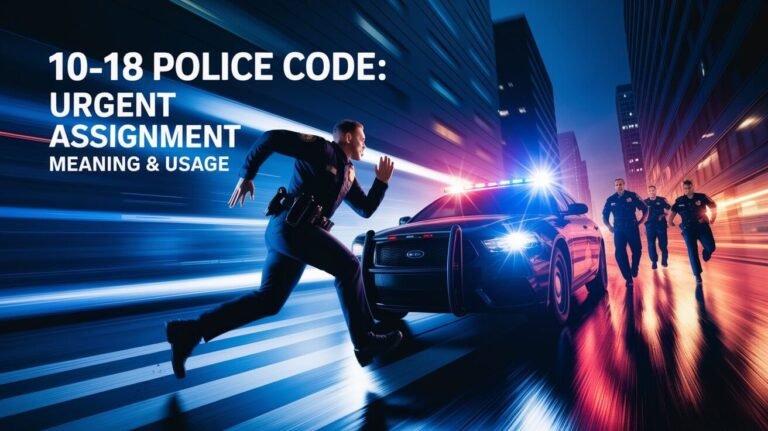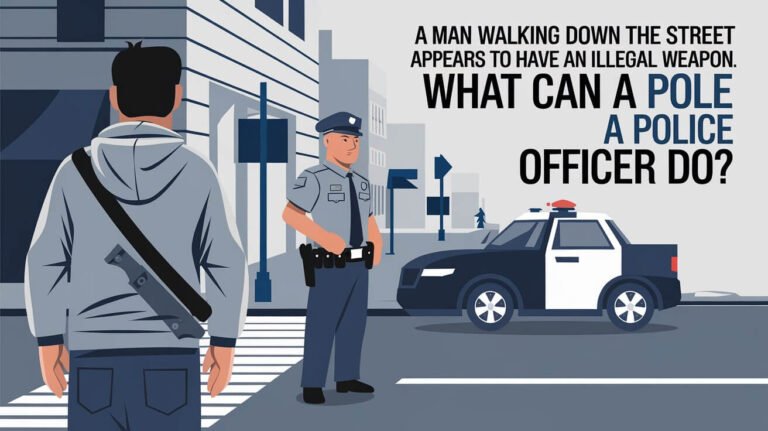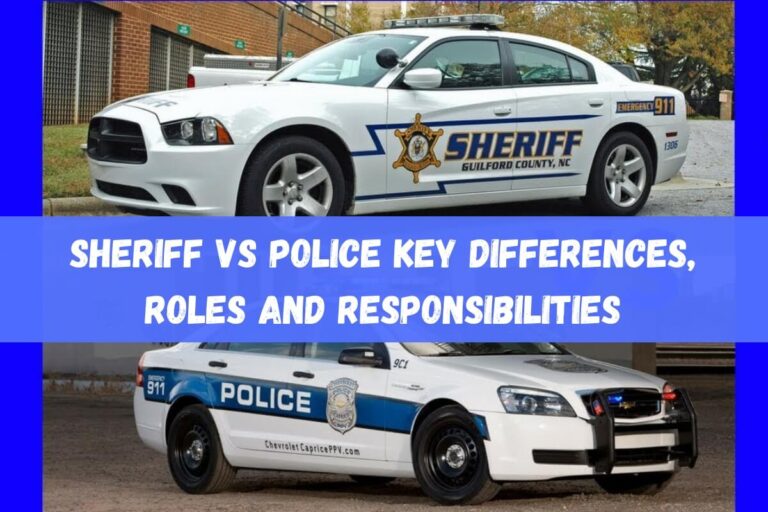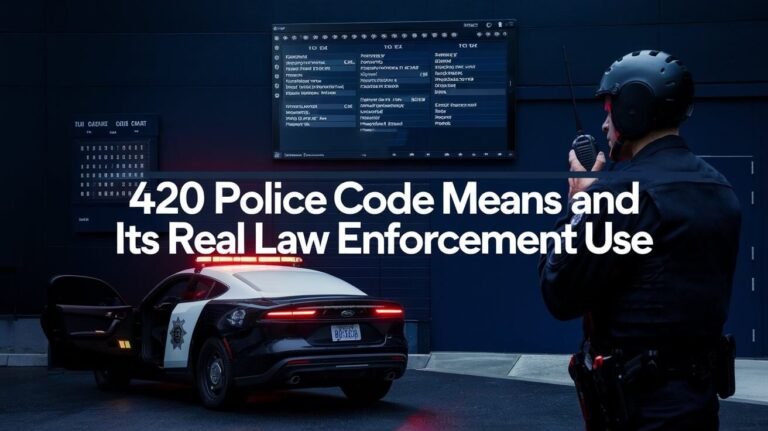Digital Police Scanner Frequencies: Tuning & Monitoring

Knowing what’s happening in your area is key, and digital police scanner frequencies help a lot. Today’s police scanners are high-tech, with lots of features. They let law enforcement and others listen in on emergency talks in real time.
About half of U.S. police departments now use digital signals instead of old analog ones. This change makes communication clearer and more reliable.
Choosing the right police scanner is important. You need one that fits your needs. The Uniden Bearcat BCD436HP and the Whistler WS1040 are good choices. They have cool features like digital signal handling and location scanning.
Knowing about digital frequencies is critical for using police scanners well. It’s very important for those who use scanners for work or fun.
Radio Spectrum Basics for Police Communications
Knowing the radio spectrum is key for police to talk effectively. It’s split into bands like VHF and UHF. VHF is often used for police, while UHF is for special services. Police use different frequencies in these bands to talk to each other and emergency services.
The radio spectrum is a limited resource. Agencies like the FCC manage it carefully. In the U.S., the FCC picks frequencies for police, including VHF and UHF bands.
Key Frequency Bands for Police Communications
- VHF (Very High Frequency): 30-300 MHz
- UHF (Ultra High Frequency): 300-3000 MHz
Police use VHF and UHF frequencies for secure talk. They have trunked and conventional systems. Digital signals, like APCO-25, make communication secure and efficient.
| Frequency Band | Police Communication System |
|---|---|
| VHF | Conventional systems |
| UHF | Trunked systems |
In short, knowing the radio spectrum is vital for police communication. By using VHF and UHF, police ensure reliable and secure talks. This is critical for public safety.
Digital Police Scanner Frequencies Across America
Digital police scanner frequencies change a lot across America. Law enforcement uses different frequencies for dispatch, tactical operations, and emergencies. To find the right frequencies, you need to know the state, county, town, and the type of scanner. Online tools like the Digital Frequency Search help you find frequencies by county and state.
When looking for digital police scanner frequencies, remember the operation status. “Statewide” means the frequency is used across the state. You can also filter by transmit power, from 0-150 watts, to get better reception. Frequency range searches let you look for specific bands.
Some interesting facts about digital police scanner frequencies in America include:
- More than 50% of police departments now use digital communications. This makes digital scanners key for listening to emergency channels.
- About 40% of police departments share scanner frequency info on their websites.
- Only about 25% of police radio talks are open to scanners. This is because many police now use encrypted frequencies.
To get access to digital police scanner frequencies, you can use online databases, special websites, or apps. With the right tools and knowledge, you can keep up with local law enforcement and emergencies. This helps keep everyone safe and informed.
| State | County | Frequency | Operation Status |
|---|---|---|---|
| California | Los Angeles | 851.2375 MHz | Statewide |
| New York | New York City | 866.0125 MHz | Countywide |
| Texas | Houston | 854.9875 MHz | Citywide |
Equipment Requirements for Reception
To get digital police scanner frequencies, you need the right gear. This includes a digital scanner, an antenna, and software. The scanner’s receiver and decoder are key to getting and decoding digital signals.
Scanner hardware is very important. The quality of your scanner can make a big difference. For example, a digital scanner with a good receiver and decoder will get signals clearer than an analog one. Choosing the right antenna is also key. A good antenna can make your scanner’s signal stronger and clearer.
Scanner Hardware Components
Scanner hardware has three main parts: the receiver, decoder, and amplifier. These work together to get and decode digital signals. The receiver catches the signal, the decoder makes sense of it, and the amplifier makes it stronger. You need a compatible receiver, decoder, and amplifier for your scanner.
Antenna Selection Tips
Choosing the right antenna is critical for getting digital police scanner frequencies. A good antenna can make your scanner’s signal stronger and clearer. When picking an antenna, look at its frequency range, gain, and type. A Discone antenna is a great choice for digital signals. You’ll also need a compatible antenna and coaxial cable.
| Equipment | Description |
|---|---|
| Scanner Hardware | Receiver, decoder, and amplifier |
| Antenna | Discone, gain, and frequency range |
| Software | Programming and updating the scanner |
To receive digital police scanner frequencies, you need scanner hardware, an antenna, and software. By picking the right equipment and following antenna tips, you can boost your scanner’s range and reception.
Signal Decoding Methods
Signal decoding is key in digital police scanning. It lets us receive and understand digital signals. There are many methods, like analog and digital decoding. Analog is for old signals, and digital, like APCO-25, is for new ones.
Decoding methods are important because they tell us what kind of signal we’re getting. For example, Amplitude Modulation (AM) and Frequency Modulation (FM) are used a lot. AM uses 2/3 for the carrier wave and 1/3 for the signal. FM uses the carrier wave’s deviation to show the signal type.
Some common digital decoding methods include:
- C4FM and CQPSK, used in P25 Digital Modulation
- APCO-25, used for digital signal decoding
- Single Sideband (SSB) transmission, which requires about 1/6th the power compared to traditional AM transmission
In digital police scanning, the right decoding methods are key. They help us get clear and reliable signals. This is very important in emergencies. The Baofeng UV-5R, a popular radio, supports many decoding methods, including FM and emergency frequencies.
| Decoding Method | Description |
|---|---|
| APCO-25 | Digital signal decoding method used in P25 Digital Modulation |
| C4FM and CQPSK | Four-state digital modulations used in P25 Digital Modulation |
| Single Sideband (SSB) | Transmission method that requires about 1/6th the power compared to traditional AM transmission |
Regional Frequency Allocation Maps
Understanding how digital police scanners work is crucial, especially given the intricate frequency system used in the U.S. Different services like law enforcement and emergency use their own ranges. Maps help show which frequencies are used where.
In metropolitan areas, like cities, frequencies are more complex. This is because there’s a lot of demand for communication. But, in rural districts, it’s simpler with fewer services. The maps show these differences clearly.
Essential Factors for Regional Frequency Allocation
- Frequency range: The range of frequencies used in a particular area, which can vary depending on the location and type of service.
- Service type: Different services, such as law enforcement, fire, and emergency services, have their own designated frequency ranges.
- Geographic location: The frequency allocation can vary significantly depending on the geographic location, with metropolitan areas and rural districts having distinct frequency allocation patterns.
Understanding regional frequency allocation maps is vital. It helps users get the best from their digital police scanners. This knowledge keeps users updated and makes the tool more effective.
Federal Communications Commission Regulations
The Federal Communications Commission (FCC) is key in managing digital police scanners. It makes sure law enforcement follows rules. These rules cover things like frequency and power to avoid messing with other systems.
Law enforcement must get the right licenses and permits to use these scanners. This is all part of FCC rules.
Some important FCC rules are:
- Frequency allocation: The FCC picks out frequencies for police to use, so they don’t mess with other systems.
- Power output: The FCC sets limits on how strong police scanners can be to keep transmissions safe.
- Licensing and permits: Police need special permits to use scanners, making sure they follow FCC rules.
FCC also has guidelines for using digital police scanners. They must be used only for official police work. The FCC works with police to make sure they follow these rules.
This way, police scanners work well and safely. It helps keep everyone safe and stops problems with other systems.
| Regulation | Description |
|---|---|
| Frequency allocation | Assignment of specific frequencies for use by law enforcement agencies |
| Power output | Regulation of the power output of digital police scanners to prevent interference |
| Licensing and permits | Requirement for law enforcement agencies to obtain licenses and permits to operate digital police scanners |
Following FCC rules, police can use scanners safely and effectively. This is key for keeping everyone safe and avoiding problems with other systems. Digital police scanners are critical for emergency responses, so following FCC rules is essential.
Reception Optimization Techniques
Reception optimization is key for digital police scanners to work well. It involves getting rid of interference and boosting signals. This makes the scanner’s reception better and farther-reaching.
Using top-notch antennas and placing them high up are good strategies. Also, keeping the device in good shape is important. Digital radios can make batteries last longer and signals stronger. But, things like ice or strong winds can affect the antenna’s performance. So, it’s important to check and adjust the antenna’s position often.
Effective Interference Elimination
Getting rid of interference is critical for clear signals. You can use filters to block out unwanted signals. But, avoid auto filters as they can slow down scanning.
Signal Amplification Methods
Boosting signal strength is another way to improve reception. You can use high-gain antennas or amplifiers. Or, place the antenna higher up. Regular maintenance, like replacing batteries on time, is also key.
Using these techniques, you can make your digital police scanner more effective. Whether it’s by reducing interference or amplifying signals, optimizing reception is vital. It ensures you get the best out of these devices.
Common Technical Challenges
Using digital police scanners can sometimes be tricky. Users might face issues like interference, signal loss, or even equipment failure. Knowing how to tackle these problems is key to getting the best out of your scanner.
Some common issues include weak signals, antenna problems, and software bugs. Signals can weaken due to distance, terrain, or other devices. Antennas and software glitches can also cause problems. To fix these, it’s important to understand your scanner well and use troubleshooting methods.
Here are some key factors to consider when troubleshooting digital police scanners:
- Signal strength and quality
- Antenna type and placement
- Software version and updates
- Interference from other devices
Focusing on these areas and using the right troubleshooting steps, you can overcome common issues. This ensures your digital police scanner works at its best.
| Challenge | Description | Solution |
|---|---|---|
| Signal Degradation | Weak or distorted signal | Check antenna placement, update software, or use signal amplification |
| Antenna Issues | Poor antenna quality or placement | Use a high-quality antenna, adjust placement, or use an external antenna |
| Software Glitches | Malfunctioning software | Update software, reset scanner, or contact manufacturer support |
Tackling these common technical challenges, you can make sure your digital police scanner works well. This gives you reliable access to important communications.
Wrap-Up Thoughts
Digital police scanners are key for law enforcement and fans. They help us understand radio waves, what you need to listen, and how to decode signals. This lets us keep up with emergency talks in our area.
The police scanner world is growing fast. This is because people want better ways to talk about safety. New digital tech is making scanners better at catching signals and sending data.
Switching to digital and trunked systems makes police work better. It makes signals clearer and stronger. This helps police act fast when it matters most.
Mobile tech and cloud services make sharing info easier. This means police can get and share important data right away. It helps them work together better.
As rules change and encryption grows, scanners with new features are more important. They help keep us safe. AI and machine learning make scanners smarter at finding threats. 5G will make things even faster.
Keeping up with scanner tech and following FCC rules is important. It helps everyone use these tools to make communities safer. This is good for the whole country.
Popular Post Queries
What are digital police scanner frequencies?
Digital police scanner frequencies are radio waves used by police and emergency services. They help law enforcement and people who want to know what’s happening in their area.
What is the difference between VHF and UHF bands?
VHF bands are used for police talk, while UHF bands are for specialized services. Knowing the difference helps you use digital scanners better.
What are trunked and conventional systems?
Trunked systems are advanced and efficient, while conventional systems are simpler. Each has its own benefits and drawbacks.
How can I find digital police scanner frequencies in my area?
To find local scanner frequencies, know the ones used by your police. Online resources, like the first source, can help you find them.
What equipment do I need to receive digital police scanner frequencies?
You need a digital scanner, antenna, and software to receive frequencies. The scanner’s hardware is key to getting and decoding digital signals.
How does signal decoding work in digital police scanning?
Decoding is vital for understanding digital signals. There are methods like analog and digital decoding, with APCO-25 being used for digital signals.
How are regional frequency allocation maps important for digital police scanners?
Maps show where to find scanner frequencies. Different areas have different frequencies. Knowing this helps use scanners well.
What are the FCC regulations for digital police scanners?
The FCC sets rules for scanners, including frequencies and equipment. Agencies must follow these rules, getting licenses and permits as needed.
How can I optimize the reception of digital police scanner frequencies?
Improving reception is key. Techniques like reducing interference and amplifying signals can help. Weather also affects signals.
What are some common technical challenges with digital police scanners?
Scanners face issues like interference and signal loss. Knowing how to fix these problems is important for good use.

